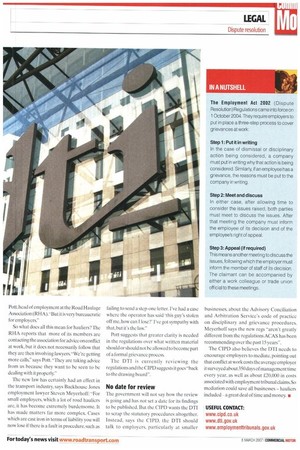IN A NUTSHELL
Page 39

If you've noticed an error in this article please click here to report it so we can fix it.
The Employment Act 2002 (Dispute Resolution) Regulations came into force on 1 October 2004. They require employers to put in place a three-step process to cover grievances at work: Step 1: Put it in writing In the case of dismissal or disciplinary action being considered, a company must put in writing why that action is being considered. Similarly, if an employee has a grievance, the reasons must be put to the company in writing.
Step 2: Meet and discuss In either case, after allowing time to consider the issues raised, both parties must meet to discuss the issues. After that meeting the company must inform the employee of its decision and of the employee's right of appeal.
Step 3: Appeal (if required) This means another meeting to discuss the issues, following which the employer must inform the member of staff of its decision. The claimant can be accompanied by either a work colleague or trade union official to these meetings.






















































































































































































